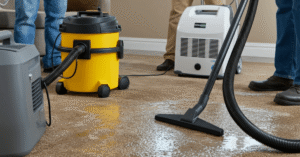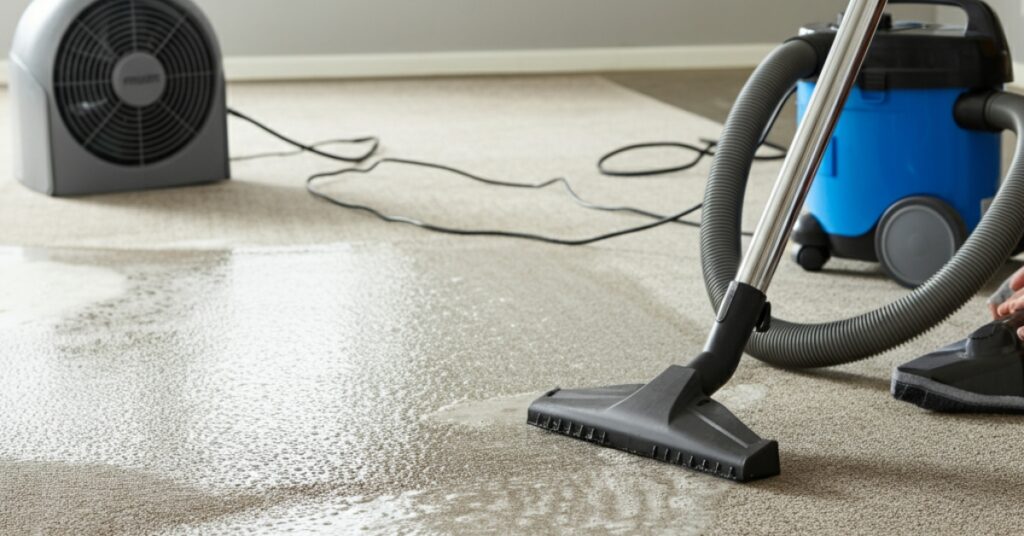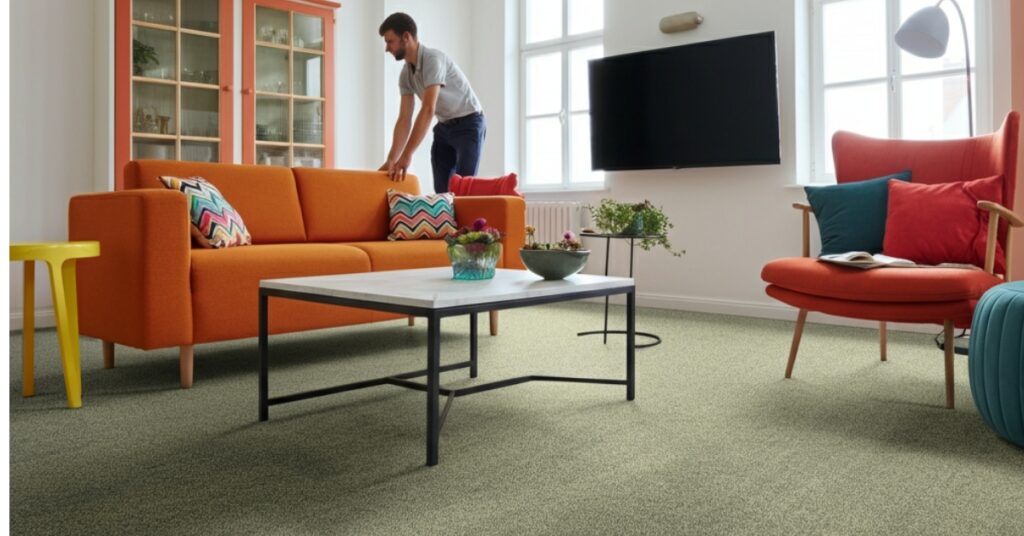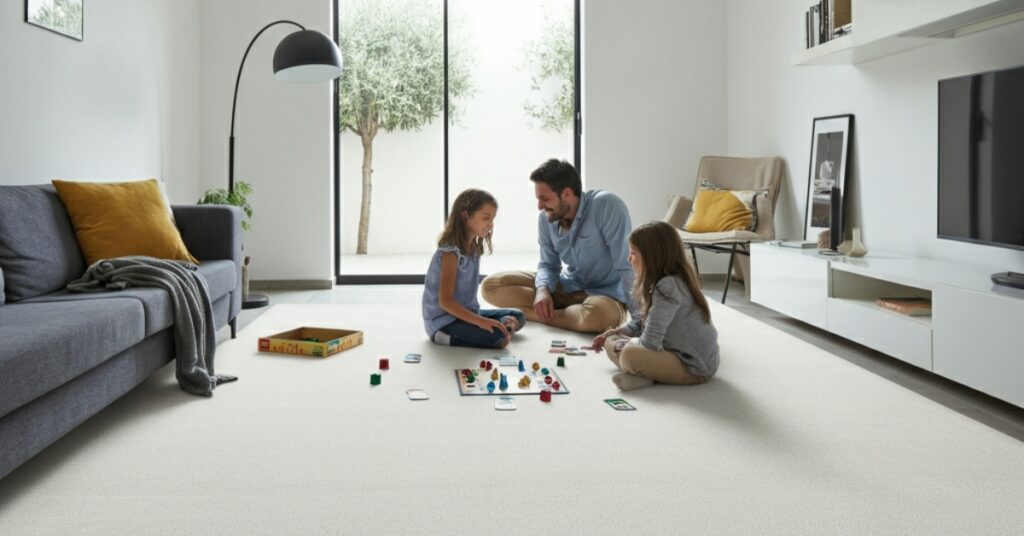As an Amazon Associate, I earn from qualifying purchases.
Vacuuming carpet properly makes a dramatic difference in your home’s cleanliness and air quality. Most people think they know how to vacuum carpet effectively, but common mistakes leave dirt embedded deep in fibers. Professional cleaning techniques can transform your carpets from dingy and worn to fresh and vibrant.
Regular vacuuming removes surface debris, but deep cleaning requires specific methods and timing. Furthermore, using the right vacuum settings and techniques prevents carpet damage while maximizing dirt removal. This comprehensive guide reveals professional secrets for achieving spotless carpets that last longer and look better.
Why Proper Carpet Vacuuming Matters
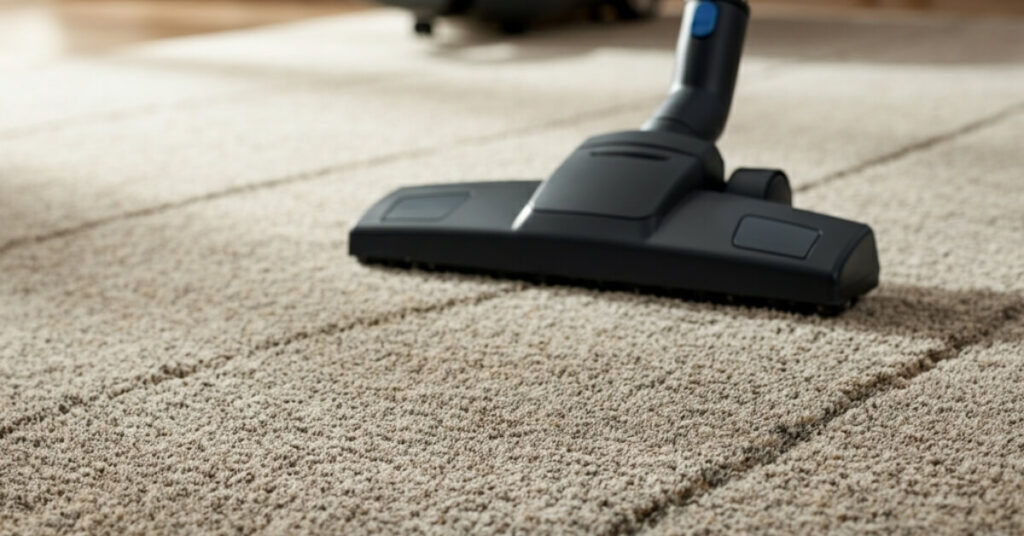
Effective carpet vacuuming does more than improve appearance. Deep-seated dirt acts like sandpaper, gradually wearing down carpet fibers with each footstep. Additionally, trapped allergens, dust mites, and bacteria create health concerns for family members, especially those with respiratory sensitivities.
Professional carpet cleaning companies understand that proper vacuuming extends carpet life significantly. Quality vacuum techniques remove up to 85% of dry soil before it embeds permanently in carpet backing. Moreover, regular deep vacuuming prevents the buildup that eventually requires expensive professional steam cleaning or carpet replacement.
Signs Your Carpet Needs Better Vacuuming
Several indicators reveal when your current vacuuming routine needs improvement. First, carpet traffic patterns remain visible even after vacuuming, suggesting embedded dirt that surface cleaning cannot reach. Additionally, persistent odors often indicate organic matter trapped deep within carpet fibers that standard vacuuming misses.
Carpet that feels rough or gritty underfoot contains abrasive particles that regular vacuuming should remove. Similarly, increased allergy symptoms or dust accumulation on furniture near carpeted areas suggests inadequate dirt removal. These conditions require more thorough vacuuming techniques rather than simply increasing frequency.
Understanding Carpet Fiber Types
Different carpet materials require specific vacuuming approaches for optimal results. Synthetic fibers like nylon and polyester handle aggressive vacuuming well and benefit from strong suction and rotating brushes. Natural fibers such as wool require gentler treatment to prevent damage while still achieving thorough cleaning.
Loop pile carpets need different techniques than cut pile varieties. Loop pile benefits from suction-only cleaning to prevent snagging, while cut pile responds well to brush agitation. Additionally, high-pile carpets require multiple passes at different heights to reach embedded dirt, while low-pile carpets clean effectively with fewer passes.
Essential Vacuum Features for Deep Carpet Cleaning
Modern vacuum cleaners offer various features that significantly impact carpet cleaning effectiveness. HEPA filtration systems trap microscopic particles that standard filters miss, improving indoor air quality while preventing redistribution of allergens during vacuuming. Additionally, adjustable height settings ensure proper brush contact with different carpet pile heights.
Powerful motors provide the suction necessary for deep soil removal, but motor power alone doesn’t guarantee effectiveness. Airflow design and brush roll configuration matter equally. Furthermore, edge-cleaning features help remove debris from baseboards and corners where dirt typically accumulates.
Choosing the Right Vacuum Settings
Proper vacuum settings maximize cleaning effectiveness while protecting your carpet investment. Height adjustment should position the brush roll to barely touch carpet fibers, creating optimal agitation without excessive wear. Too low settings can damage carpet, while too high settings reduce cleaning effectiveness significantly.
Suction control becomes important with delicate carpets or area rugs that might pucker under full power. Start with medium suction and adjust based on carpet response and cleaning results. Additionally, brush roll speed affects cleaning performance, with slower speeds working better for deep-pile carpets and faster speeds suited to low-pile varieties.
Preparing Your Room for Effective Vacuuming
Thorough preparation dramatically improves vacuuming results and efficiency. Remove small objects, toys, and debris that could clog the vacuum or damage the machine. Additionally, dust furniture and ceiling fans before vacuuming to prevent settled particles from contaminating freshly cleaned carpets.
Open windows or turn on ventilation to improve air circulation during cleaning. This helps remove airborne particles disturbed during vacuuming. Furthermore, plan your vacuuming route to work from the farthest point toward the exit, preventing foot traffic on freshly cleaned areas.
Professional Vacuuming Techniques
Professional carpet cleaners use specific patterns and methods that amateur cleaners often overlook. The overlapping pass technique ensures complete coverage, with each vacuum stroke overlapping the previous by approximately one-third. This method prevents missed spots and ensures thorough soil removal from all carpet areas.
Slow, deliberate movements allow the vacuum adequate time to remove embedded debris. Quick passes might remove surface dirt but leave deeper soil untouched. Additionally, vacuuming in multiple directions helps lift carpet fibers and remove dirt from different angles, achieving more thorough cleaning results.
The Multi-Pass Method
Multiple passes over the same area remove significantly more soil than single passes, even with powerful vacuums. Professional cleaners typically make 3-5 passes over heavily trafficked areas and 2-3 passes over lighter traffic zones. Each pass should move in slightly different directions to maximize dirt removal.
Forward passes should move slowly to allow brush agitation and suction time to work effectively. Backward passes can move slightly faster since the carpet fibers are already agitated. Additionally, cross-directional passes help lift flattened fibers and remove debris that forward-backward motion might miss.
Dealing with High-Traffic Areas
High-traffic zones require special attention during carpet vacuuming sessions. These areas accumulate more soil and experience greater fiber compression, making dirt removal more challenging. Additionally, traffic patterns create wear spots that need gentle handling to prevent further damage while achieving thorough cleaning.
Pre-treat heavily soiled areas with carpet cleaning powder or spray before vacuuming. Allow treatment time to work according to product instructions. Furthermore, use slow, overlapping passes with extra attention to ensure complete soil removal from these problem areas.
Edge and Corner Cleaning Techniques
Carpet edges and corners accumulate dirt that standard vacuum passes often miss. Wall-to-wall carpeting traps debris against baseboards where normal vacuum heads cannot reach effectively. Additionally, furniture placement creates hard-to-reach areas that require special attention and techniques.
Use crevice tools and edge-cleaning features to remove debris from corners and baseboards. Move furniture periodically to vacuum underneath and behind pieces. Furthermore, angle the vacuum head to direct suction toward edges where dirt typically accumulates during normal foot traffic.
Advanced Carpet Care Tips
Beyond basic vacuuming, several techniques enhance carpet appearance and longevity. Carpet raking before vacuuming helps lift flattened fibers and loosens embedded debris for easier removal. Additionally, changing vacuuming directions periodically prevents permanent traffic patterns and helps maintain even carpet appearance.
Temperature and humidity affect vacuuming effectiveness. Slightly damp conditions help control dust during cleaning, while extremely dry conditions create static that can reduce vacuum efficiency. Furthermore, morning cleaning often works best when household activity is minimal and dust has settled overnight.
Maintaining Your Vacuum for Optimal Performance
Regular vacuum maintenance ensures consistent cleaning performance and extends machine life. Empty dust containers or replace bags before they reach full capacity to maintain maximum suction power. Additionally, clean or replace filters according to manufacturer schedules to prevent reduced airflow and motor strain.
Brush roll maintenance prevents tangled hair and debris from reducing cleaning effectiveness. Remove wrapped materials regularly and check for bent or broken bristles that need replacement. Furthermore, inspect belts, hoses, and connections for damage that could reduce suction or cause performance problems.
Frequency Guidelines for Different Areas
Vacuuming frequency should match soil accumulation rates in different areas. High-traffic zones like entryways and hallways benefit from daily vacuuming, while bedrooms might need attention only twice weekly. Additionally, homes with pets require more frequent vacuuming to control hair and dander accumulation.
Commercial spaces typically need daily vacuuming to maintain professional appearance and prevent excessive soil buildup. Seasonal adjustments account for changing conditions, with more frequent cleaning during muddy spring months and leaf-fall seasons. Furthermore, special events or increased activity levels warrant temporary increases in vacuuming frequency.
Common Vacuuming Mistakes to Avoid
Many homeowners unknowingly damage their carpets through improper vacuuming techniques. Using incorrect height settings can crush carpet fibers or reduce cleaning effectiveness significantly. Additionally, moving too quickly prevents adequate soil removal and wastes time and effort.
Neglecting vacuum maintenance reduces cleaning performance and can damage both the machine and carpet. Full dust bags or clogged filters restrict airflow and strain motors. Furthermore, ignoring brush roll maintenance allows tangled debris to scratch and damage carpet fibers during cleaning.
Overcoming Stubborn Dirt and Stains
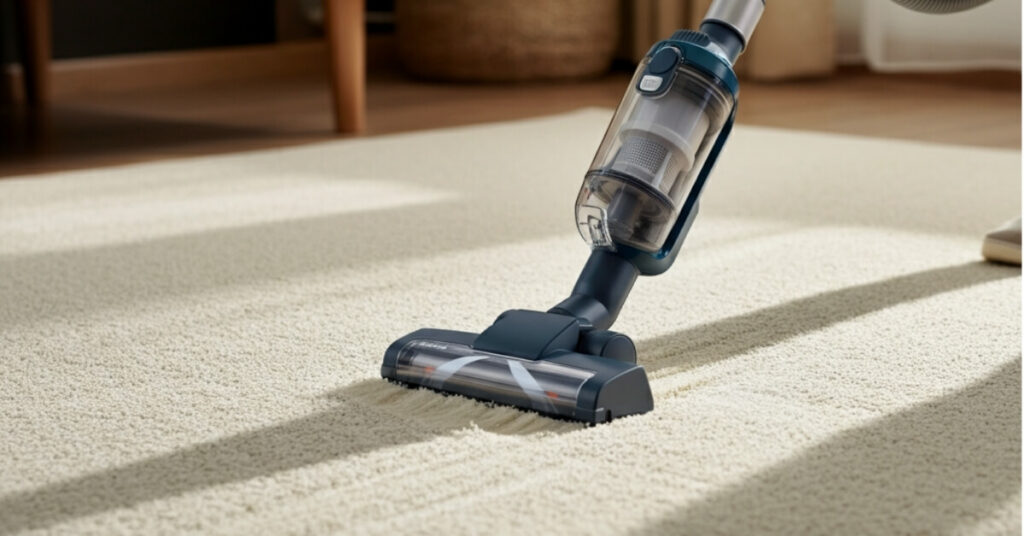
Persistent soil and stains require specialized approaches beyond standard vacuuming. Pre-treatment with appropriate carpet cleaning solutions helps loosen embedded dirt for easier removal. Additionally, allowing treatment time to work before vacuuming improves effectiveness significantly.
Dry carpet cleaning compounds work well for general soil removal and can be vacuumed up after application. Steam cleaning or professional extraction may be necessary for heavily soiled areas that resist standard cleaning methods. Furthermore, prompt attention to spills and stains prevents permanent setting that makes removal more difficult.
Protecting Carpet Investment
Preventive measures reduce the need for intensive cleaning while extending carpet life. Strategic placement of area rugs and mats in high-traffic zones protects underlying carpet from excessive wear. Additionally, removing shoes at entrances significantly reduces dirt tracked onto carpeted surfaces.
Regular professional cleaning supplements home vacuuming efforts and addresses deep soil that home equipment cannot remove. Professional services typically recommend annual or bi-annual deep cleaning depending on household conditions and traffic levels. Furthermore, prompt attention to spills and immediate vacuuming of tracked-in debris prevents permanent staining and embedment.
Frequently Asked Questions
1. How often should I vacuum carpet in my home?
High-traffic areas need daily vacuuming, while bedrooms require 2-3 times weekly. Adjust frequency based on household size, pets, and soil accumulation rates.
2. Should I vacuum new carpet differently than old carpet?
Yes, new carpets shed fibers initially and benefit from gentle, frequent vacuuming. Older carpets may require more aggressive techniques to remove embedded soil.
3. Can vacuuming damage my carpet?
Improper techniques like incorrect height settings or excessive brush agitation can damage carpet fibers. Follow manufacturer guidelines and adjust settings appropriately.
4. What vacuum settings work best for different carpet types?
Low-pile carpets need lower height settings and stronger suction. High-pile carpets require higher settings with gentler brush action to prevent fiber damage.
5. How do I know if my vacuum is working effectively?
Check for visible dirt removal, improved carpet appearance, and reduced allergen symptoms. Poor performance might indicate maintenance needs or incorrect settings.
6. Should I vacuum before or after dusting furniture?
Always dust first to prevent settled particles from contaminating freshly vacuumed carpets. This sequence maximizes cleaning effectiveness and prevents double work.
7. Can I vacuum wet or damp carpet?
Never vacuum wet carpet with standard vacuums, as this can damage both machine and carpet. Allow complete drying or use specialized wet/dry equipment designed for moisture.
Achieve Professional Results at Home
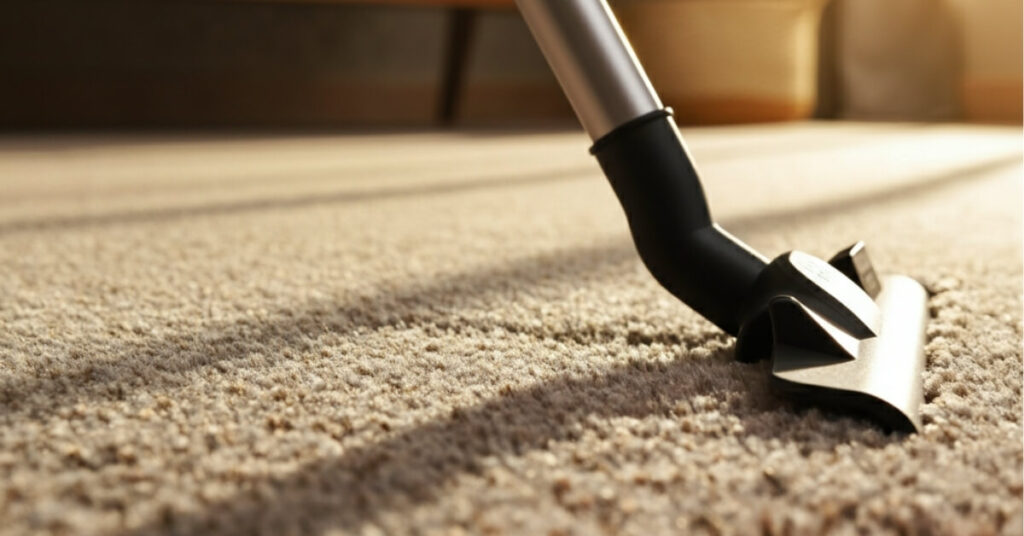
Mastering proper carpet vacuuming techniques transforms your home’s cleanliness and indoor air quality significantly. These professional methods help you vacuum carpet more effectively than standard approaches, extending carpet life while improving appearance and health benefits. Remember that consistent application of these techniques provides the best long-term results for your flooring investment.
Quality carpet care requires patience, proper equipment, and attention to detail. By implementing these professional strategies, you can maintain carpets that look and feel fresh while protecting your investment for years to come. For more information you can read our guideline on How to Clean Carpet.
As an Amazon Associate, I earn from qualifying purchases.

